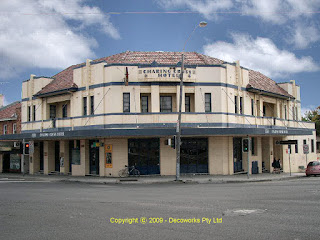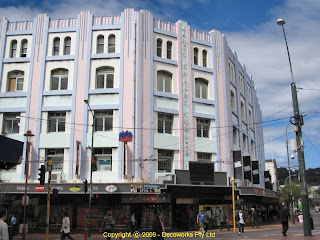Petersham Town Hall

The first Petersham Town Hall was built on this site at 105 Crystal Street in Petersham in 1882. In 1937 a plan for a new town hall, prepared by architects Rudder & Grout, was accepted and the old hall demolished. The new building was opened in July, 1938. Much of the interior has been retained and the hall itself has some nice detailing. The building is listed in the RAIA Register of significant 20th century buildings. The hall had a brush with fame when some of the flamboyant dancing scenes from director Baz Lurhmann's 1992 film "Strictly Ballroom" were filmed in its main auditorium. The Clock Tower detail The imposing Art Deco interpretation of a classic Greek temple entrance The auditorium above left and detail of the ceiling lights Sources: Sydney Heritage Listing Marrickville Council website





